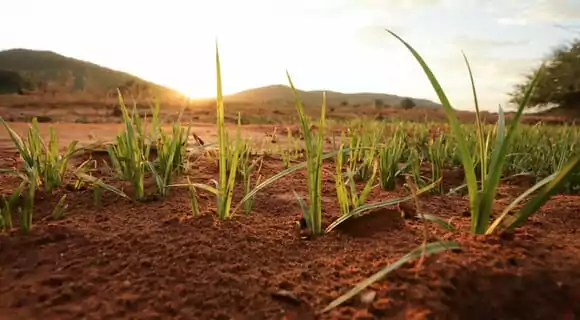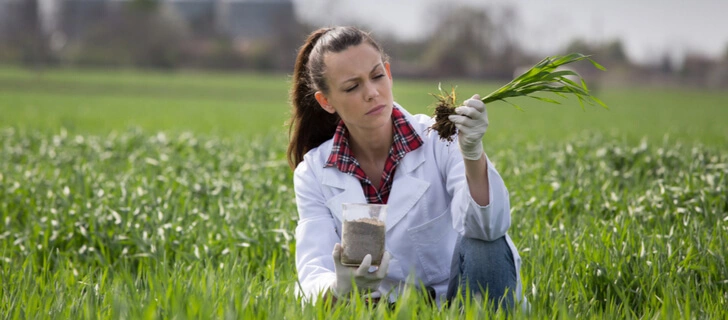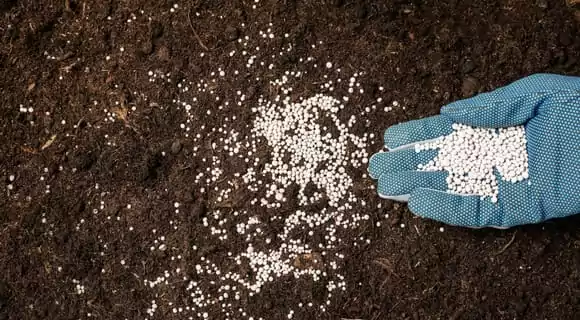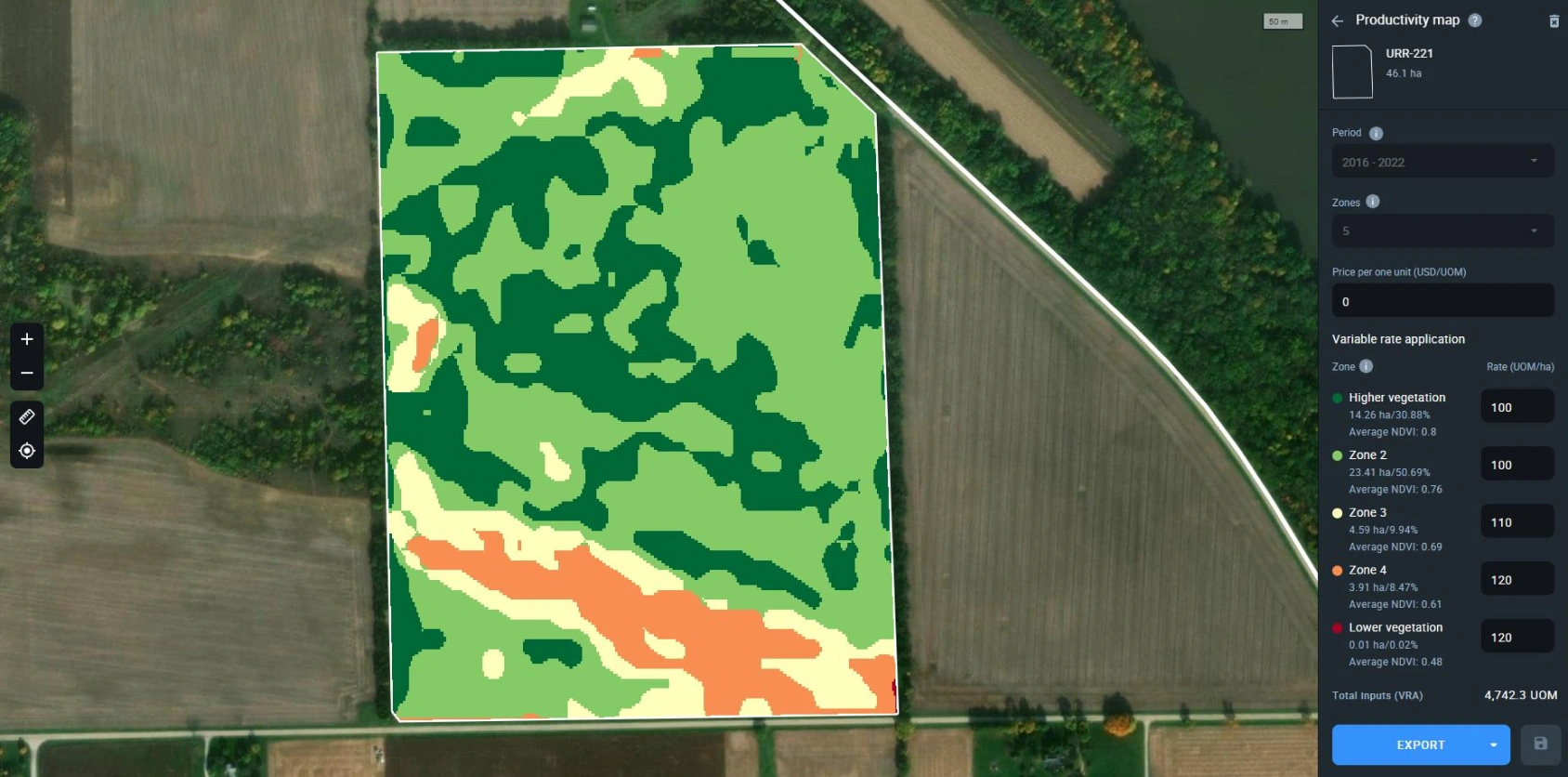
Soil Fertility: How To Measure, Preserve, And Improve
Soil fertility is critical for the development of plants and influences their yield. Fertile fields are a great asset to farmers. But improper agricultural management can lead to land depletion.
It is critical to remember the importance of fertilizers and environmentally friendly cultivation methods in increasing field fertility. High yields can be obtained from poor fields with appropriate soil fertility management practices. Hence, growers who understand how to preserve soil fertility can maximize farmland productivity and maintain it over time.
What Is Soil Fertility And Why Does It Matter?
Soil fertility refers to a soil’s potential to create favorable chemical, physical, and biological conditions and provide all the essential nutrients to support plant growth. It is necessary to understand that mineral nutrients are not food for plants (because plants produce food on their own through photosynthesis), but rather a supplement that provides more energy for plants’ development.
Nutrients can speed up plant growth, strengthen their immune systems against pests and diseases, and increase fertility. Fertile soil is perfect for growing crops because it retains an average or high level of valuable micro- and macroelements, ensuring plant strength and health throughout the development cycle. The importance of fertile soil cannot be overstated. Therefore, fertility is one of the first considerations for agricultural producers when planning fieldwork.
Fertility defines the capacity of the ground to hold and provide nutrients to plants. Is fertile soil always productive? No, productivity includes the concept of fertility, as well as many other factors that determine the ground’s ability to grow a crop.
What Makes Soil Fertile
Factors that affect soil fertility are classified as direct and indirect. The amount of organic matter, moisture, and field aeration are direct factors. The indirect ones include soil biota activity, tillage methods, and many others. Let us take a look at the most important soil fertility factors.

Humus Content
Land fertility is proportional to the amount of humus present. Humus contains nutrients, particularly nitrogen and phosphorus, necessary for most plants. Humus increases soil fertility, creating an ideal microclimate for crop development with a favorable temperature, adequate moisture, and air. Humus content is closely related to types of soil.
Loam is considered the most fertile soil type, as it is composed of an optimal proportion of clay, sand, and silt, combining their best chemical and physical properties. At the same time, it appears to be the most humus-rich ground. And, like other humus-rich fertile soil types, loam promotes crop growth and high yields.
Soil Texture
Particle sizes and their ratios in the ground determine its texture. Soils with small particles, namely clay, have a dense structure that acts as a nutrient container. At the same time, such a structure can make it difficult for plant roots to access nutrients dissolved in water.

Mineral Composition
The ground’s mineral composition can be used to assess the ground’s ability to store nutrients; it contributes to the stabilization of organic substances in the ground and influences the distribution of microbiota. Chemical and organic fertilizers can alter the mineral composition, increasing soil fertility.
Soil pH
Why is pH such an important aspect of soil fertility? The pH of soil indicates its alkalinity or acidity, which influences the availability of nutrients to plants. The majority of crops prefer a pH range of 6.5 to 7.5 . Such limits are referred to as the acidity of fertile soil.
In alkaline lands with a pH greater than 7.5-8, most micronutrients are less available, while acidity contributes to heavy metal accumulation in the fields and reduces phosphorus absorbability. Deviation from the normal pH generally suppresses beneficial bacteria and the growth of the root system and has a negative impact on the capability of plants to absorb useful substances.
Moisture Content
Because plants take nutrients directly from water rather than the solid phase of the soil, fertility is heavily dependent on the amount of moisture in the ground. As a result, growers should select lands that provide sufficient hydration to plants.
EOSDA Crop Monitoring
Fields analytics tool with access to high-resolution satellite images for remote problem areas identification!
Aeration
Aeration is an essential factor in ensuring field fertility. Plant roots require oxygen to thrive. Furthermore, oxygen promotes the vital activity of beneficial microorganisms in the ground, such as aerobic denitrifying and nitrogen-fixing bacteria.
Soil Temperature
The temperature of the ground influences the activity of beneficial bacteria, nutrient solubility, and plant uptake. Temperatures ranging from 18 to 24°C (65 to 75°F) are ideal for most plants. All processes slow down at low soil temperature, while high temperatures cause pathogens and pests to reproduce quickly and plants to dry out.

Soil Biota
The biota of soil is exceptionally diverse, containing viruses, bacteria, fungi, and lichens. Microbes can be either plant pathogens or plant growth promoters. So how do microbes contribute to soil fertility? Microorganisms increase land fertility, especially by helping plants to assimilate mineral compounds and participating in the decomposition and decay of organic substances.
Because of its high organic matter and microorganism content, topsoil is the most fertile layer.
How To Measure Soil Fertility
For evaluating the overall quality of the land and its productivity, in particular, it is necessary to conduct soil testing. As a result, the farmer will receive data on the composition, type, mineral content (e.g., nitrogen, potassium, phosphorus), pH level, and other soil fertility indicators. Testing laboratories can also provide an interpretation of these values and general recommendations for adding nutrients to the soil.
Why are soil fertility tests important for farmers? First and foremost, soil fertility analysis reveals deficiencies and missing elements, allowing agricultural producers to understand what needs to be done to boost yields.
Notably, the balance of microelements varies depending on the type of soil. Furthermore, each culture has unique trace element requirements. Matching a field’s micronutrient content to crop needs helps determine how fertile the land is for a specific crop.

Causes And Consequences Of Decreased Soil Fertility
Declining soil fertility occurs when the amount of nutrients removed from the ground exceeds the amount added. Plants will then extract nutrients from ground reserves. Reserves are depleted until no more resources are available for plant development.
The following are the primary causes of loss of soil fertility:
- the use of fertilizers without regard for field conditions;
- unsuitable cropping system;
- continuous cultivation of crops;
- intensive tillage;
- monoculture cultivation;
- complete clearing of crop residues;
- soil erosion and land degradation;
- unfavorable climate and extreme weather conditions.
Loss of soil fertility has a significant negative impact not only on agricultural production but also on the surrounding ecosystems. Land depletion causes desertification, biodiversity loss, pollution of water bodies, and potentially dangerous changes in waterways.
How To Improve Soil Fertility
Even fertile land depletes over time, so fertility must not only be preserved but also improved. Crop rotation, fertilization, mixed planting, sowing green manure, mulching, and fallowing help to increase field fertility. The impact of living organisms on farmland fertility is also hard to overestimate: earthworms, beneficial fungi, bacteria, and protozoan unicellular organisms are extremely helpful to the soil. They improve its structure and water-holding capacity by processing organic residues or parasitizing microorganisms. Natural pest enemies, such as birds that eat insect larvae or weed seeds, also indirectly increase soil fertility.

Crop Rotation
Repeated cultivation of the same crops in the same field, season after season, reduces field fertility by removing the same chemical elements from the ground. Crop rotation is a viable solution to this problem, as it not only slows land depletion but also aids in improving soil fertility. Because each plant has different microbiological preferences, crop rotation promotes microflora diversity. Crops that improve soil fertility include hay plants and legumes.
The association between legumes, such as soybeans and alfalfa, and nitrogen-fixing bacteria Rhizobium adds nitrogen to the farmland. The nitrogen-fixing properties of legumes are determined by plant size and age; the older and larger the crop, the greater the enrichment.
No-Till Farming
The rejection of tillage allows for the strengthening of soil structure and the slowing of erosive processes. At the same time, the amount of organic matter in the ground increases, carbon dioxide emissions into the atmosphere decrease, and the life of beneficial microorganisms and worms is preserved. Furthermore, farm workers can devote time previously spent on tillage to other, more useful activities. Thus, no-till farming benefits everyone: it improves soil fertility, saves farmers time and resources, and positively impacts the environment.
Fertilization
Legumes naturally compensate for the plant’s lack of nitrogen, but this is not always sufficient. Besides, the fertility of the field depends on the presence of other vital nutrients. Therefore, fertilizers are required.

What Minerals Make Soil Rich And Fertile?
Mineral content is one of the vital characteristics of fertile soil. Plants require six essential elements to grow. There are three critical minerals and three additional ones, each with its own unique role.
| Name | Functions |
|---|---|
| Nitrogen (N) |
|
| Phosphorus (P) |
|
| Potassium (K) |
|
| Magnesium (Mg) |
|
| Sulfur (S) |
|
| Calcium (Ca) |
|
In addition to the minerals listed, plants also need trace amounts of the following eight micronutrients: iron (Fe), copper (Cu), manganese (Mn), molybdenum (Mo), boron (B), zinc (Zn), nickel (Ni), chlorine (Cl).
How Does Fertilization Enhance Soil Fertility?
A bountiful harvest is directly proportional to the availability of micro and macro elements required by plants. Fertilization of fields is thus one of the farmers’ primary and ongoing tasks.
Fertilizers are classified into two types:
- Organic fertilizers are safe and environmentally friendly because they are obtained from natural (organic) substances, such as manure and compost. Organic fertilizers assist in restoring soil fertility in the long run. Their disadvantage is that they do not dissolve in water, minerals are slowly released from them, and the participation of microorganisms is required to acquire a form that can be assimilated by plants.
- Synthetic (chemical) fertilizers are a product of the chemical industry. They dissolve quickly in water and are rapidly absorbed, providing an immediate effect. Excessive use of these fertilizers, however, can harm crops, field health, and the environment by infiltrating and contaminating water bodies.
For high-quality fertilization, farmers must carefully choose not only the type and quantity but also the timing. Different fertilizers serve different purposes and must be used at various stages of fieldwork. Organic fertilizers work best in the fall because they have more time to rot and release nutrients. Organic and synthetic fertilizers, as well as their combinations, are effective at speeding up crop development in the spring and throughout the season.

Green Manure Seeding
Green manures cover the field with vegetation, preventing erosion and retaining moisture. However, the advantages of green manure go beyond this. They are high in nitrogen, phosphorus, potassium, starch, and protein. Green fertilizers include buckwheat, radish, mustard, barley, wheat, rye, and legumes.
Earthworms
The presence of nutrients in the ground does not imply that its physical conditions are plant-friendly. Because ground compaction makes it difficult to deliver necessary chemical elements to crop roots, fertility is also determined by the number of earthworms. How do earthworms improve soil fertility? The role of earthworms in soil fertility is enormous: they loosen the ground, digest organic residues, increase oxygen supply, and produce humus.
Soil Fertility Tracking With EOSDA Crop Monitoring
Preserving land fertility is critical for farmers, companies that provide agricultural insurance and consulting, and other agribusiness stakeholders. Even though there are a lot of fruitful fields worldwide, farmers should constantly maintain land fertility through rational cultivation.
Furthermore, agricultural producers must choose cultivation methods that maximize yield while also considering the impact on future field productivity and the environment in general. The EOSDA Crop Monitoring platform enables growers to implement a precision farming approach using GIS and remote sensing in soil fertility analysis. This is a necessary step toward using resources more efficiently, significantly lowering costs, and increasing yields.
Productivity Maps In EOSDA Crop Monitoring
You can add the field in EOSDA Crop Monitoring and create a productivity map for it in minutes. The EOSDA algorithm generates productivity maps by averaging data from satellite images over several years. Your field will be automatically divided into zones based on the NDVI index values and visualized with the dynamic palette.
Productivity maps provide an overall assessment of the state of the field by analyzing data over several years. Potentially problematic areas will be marked in yellow and red, corresponding to lower levels of land productivity. Farmers can use this data to improve the sampling process and increase the accuracy of soil analysis.

Crop Rotation Management With EOSDA Crop Monitoring
Crop rotation is the most effective method of increasing fertility in most soil types. EOSDA Crop Monitoring allows you to specify the crop type, linking it to a particular field and season, making crop rotation data for multiple fields easily accessible in one place, which is especially useful for large farms with huge areas. Combining these data with information about vegetation intensity makes it possible to estimate soil fertility in the entire field and individual sections. By analyzing historical data, you can also plan an effective crop rotation sequence for the next years.

EOSDA Custom Solution For Crop Yield Estimation
The EOSDA Crop Monitoring platform provides customized solutions such as crop yield prediction. Agricultural producers can forecast crop yields at the field, regional, or national levels using previous seasons’ statistics and trends and develop effective crop management strategies. In the case of an unfavorable prediction, you can consider taking measures to restore field fertility. The forecast is more than 90% accurate, depending on the crop and available yield statistics.
EOSDA offers a wide range of other tools for monitoring and analyzing agricultural land. Check them out on our website, and feel free to contact our sales team at sales@eosda.com for more details.
About the author:
Vasyl Cherlinka is a Doctor of Biosciences specializing in pedology (soil science), with 30 years of experience in the field. He attended the engineering college in Ukraine and received his degree in agrochemistry, agronomy and soil science in the Chernivtsi National University. Since 2018, Dr. Cherlinka has been advising EOSDA on problems in soil science, agronomy, and agrochemistry.
Recent articles

Analyze 2025 & Plan Your Best Year Yet: LandViewer Christmas Offer
It’s the most wonderful time of the year! The Christmas holidays are here, and so is your chance to analyze 2025 and plan a prosperous 2026 with more affordable Pro plans in LandViewer.

EOSDA Models Climate Change Impact On Sugarcane Yields
EOSDA modeled future temperature, rainfall, and other climate impacts on Veracruz sugarcane. The results help growers plan long-term adaptation strategies, including timing, varieties, and irrigation.

EOSDA LandViewer Black Friday Sale: Exclusive Offers & Giveaway
This Black Friday, LandViewer offers new users the chance to save on monthly plans, get extra months with yearly subscriptions, and participate in a free annual plan giveaway.